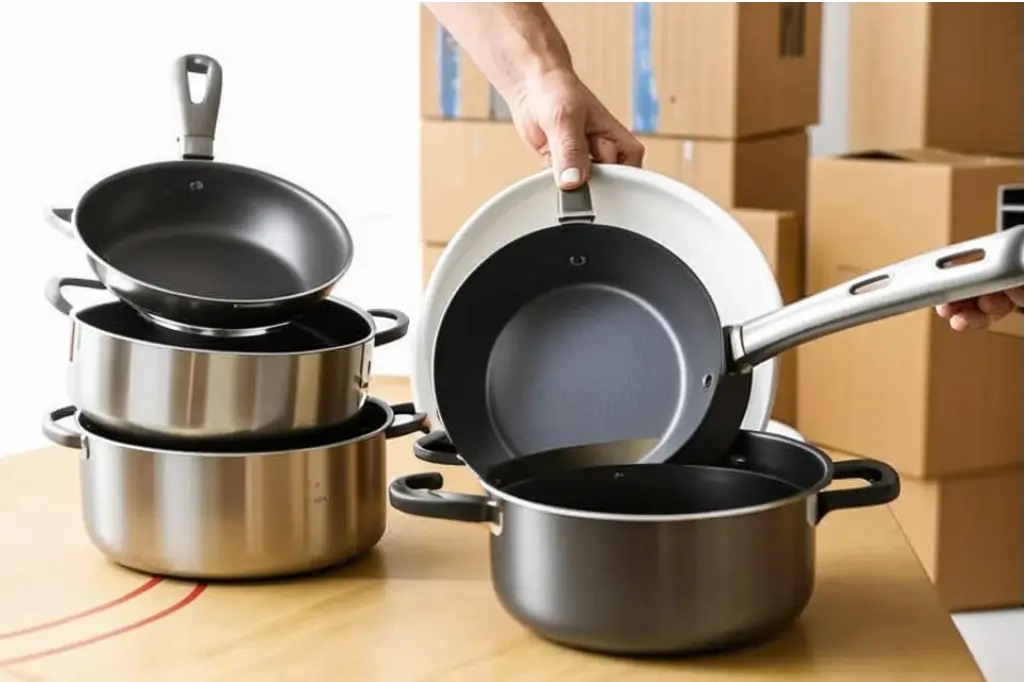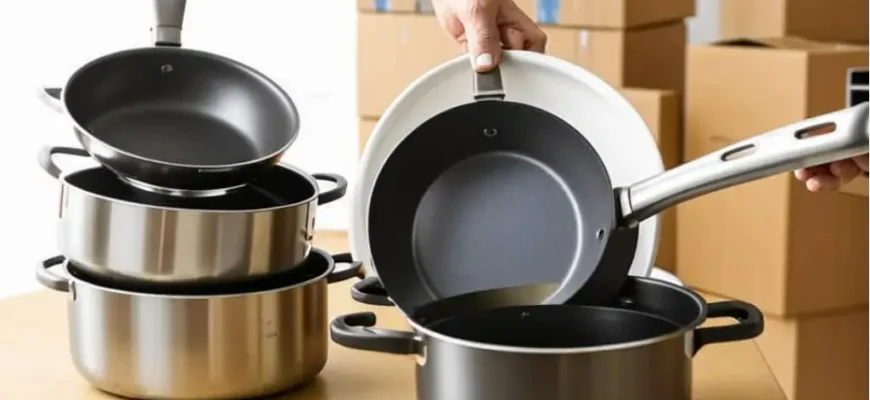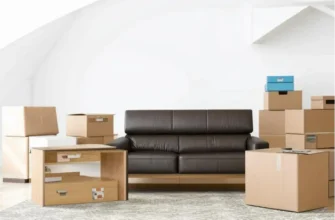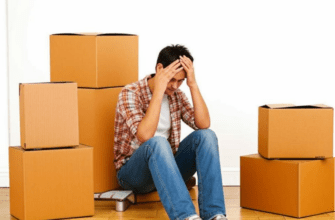Packing pots and pans may seem straightforward, but these items can be tricky to handle during a move. From heavy cast iron to delicate non-stick surfaces, here’s how to keep your cookware safe from damage in transit.

Contents
1. Gather Packing Materials
- Heavy-Duty Boxes: Choose sturdy boxes that can handle the weight of cookware.
- Packing Paper or Bubble Wrap: These materials add cushioning to prevent scratches or dents.
- Dish Towels or Kitchen Linens: Use these to layer between items and provide extra padding.
- Packing Tape: Strong tape is essential to secure the boxes.
- Marker: Label each box to know its contents and fragility level.
| Packing Material | Purpose | Notes |
|---|---|---|
| Heavy-duty boxes | Holds heavy cookware | Ensure durability |
| Packing paper | Wraps and cushions | For scratch protection |
| Bubble wrap | Additional padding | Especially for lids and handles |
| Dish towels | Fills empty spaces | Also saves space in boxes |
2. Clean and Dry Each Item
- Wash and Dry: Make sure all pots, pans, and lids are thoroughly cleaned and dried to prevent moisture buildup, which can lead to mold or rust.
3. Pack Each Pot and Pan Individually
- Wrap Each Item: Use packing paper or bubble wrap to wrap each pot and pan separately.
- Stack by Size: Nest smaller pans inside larger ones if possible, layering paper or dish towels between them to prevent scratches.
4. Secure Lids Properly
- Wrap Lids Separately: Wrap each lid in bubble wrap or packing paper, securing them with tape.
- Use Dish Towels Between Lids: If lids are stacked, place dish towels or kitchen linens between them to avoid chipping or breaking.
- Label Fragile Lids: Glass lids or delicate covers should be labeled “Fragile” to avoid unnecessary pressure during loading.
5. Place Heaviest Items on the Bottom
- Arrange Strategically: Place heavier pots and pans at the bottom of the box to maintain balance.
- Add Layers of Protection: Insert extra paper or dish towels between each layer of cookware to absorb shock.
6. Fill Empty Spaces
- Avoid Shifting: Fill gaps with crumpled paper, dish towels, or kitchen linens to prevent movement during transport.
- Pack Tightly: A snug fit minimizes movement, keeping your cookware secure.
7. Seal and Label the Boxes
- Use Strong Tape: Reinforce the box bottoms and seal them with heavy-duty packing tape.
- Label Clearly: Mark each box with “Kitchen – Pots & Pans” and “Fragile” if needed. Adding an “Open First” label helps you locate essential items quickly.
Additional Packing Tips
- Pack in Smaller Boxes: Since pots and pans can be heavy, smaller boxes are easier to handle and less likely to break.
- Avoid Overloading: Stick to a manageable weight to keep boxes intact and easy to lift.
- Consider a Separate Box for Lids: Lids can be fragile, so consider placing them in a separate box if you have several glass or delicate ones.
Conclusion
Packing pots and pans with care can save you the hassle of unpacking damaged cookware. With the right materials and a few simple steps, you can ensure your kitchen essentials arrive at your new home safely. Remember to fill gaps, use durable boxes, and label everything clearly to make your move as smooth as possible.



